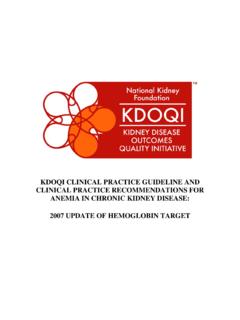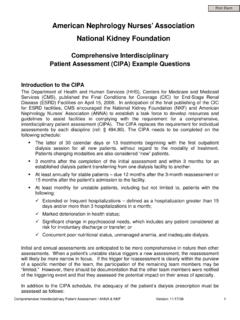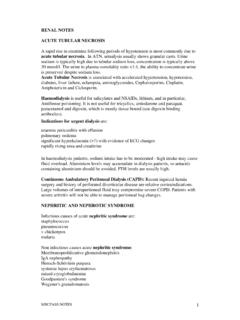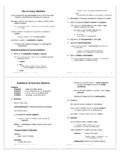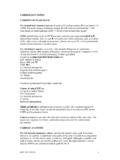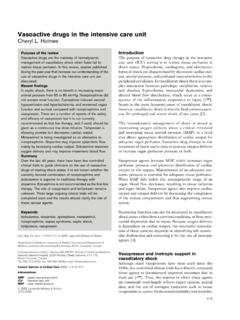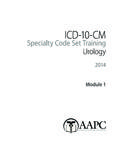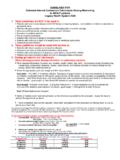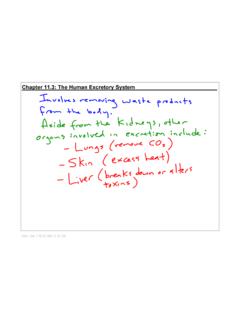Transcription of Raynel Wilson Quality Improvement Director The Renal ...
1 Raynel WilsonQuality Improvement DirectorThe Renal Network, s New?Say Goodbye to Long Term Program & Short Term Care Plan approach!The new Conditions place high expectations on facilities forcontinuallyassessingindividualpatient s care needs, & for planning &implementing the careyOutcome goals that meet current professionally accepted clinical practice standardsA New new CfCs of Patient Assessment & Plan of Care require defined StandardsyThe new CfCs use Standards developed by the ESRD communityyThere is a fabulous tool for reference of these Standards in the MATyIf an individual patient does not meet a goal on the MAT.
2 The surveyors will expect to see a revised POC for that aspect of careWhat are the Clinical PracticeStandards?yDeveloped by Renal community workgroups & coalitions; National Kidney Foundation Kidney DiseaseOutcomes Quality Initiative (NKF KDOQI)Guidelines National Quality Forum (NQF): ClinicalPerformance Measures (CPM)yAddress management of complications of ESRDyWork collaborativelyyCommunication by regular discussions about patient status & the evolving plan of careyWork sequentiallyyMedical record is the chief means of communicationMultidisciplinaryThe Interdisciplinary TeamIncludes at a minimum.
3 YThe patient or their designee (if the patient chooses)yA registered nurseyA physician treating the patient for ESRDyA social workeryA dietitianPatient Assessment (V501) andPatient Plan of Care (V541)These 2 Conditions:yAre interrelated ( can t have one without the other )yAddress patient assessment & care delivery requirements in care areas associated with complications of ESRD Patient AssessmentyThe IDT must provide each patient an individualized comprehensive assessment (V501)y14 assessment criteria (V502 515)yReassessments at defined frequencies (V516 520) Patient Plan of Care (V541)yThe IDT must develop & implement a written, individualized comprehensive patient plan of care (POC)
4 YPOC based upon the comprehensive assessmentyAddresses each patient s care needsyOutcome goals in accordance with clinical practice standardsyCurrent health statusyAppropriateness of dialysis prescriptionyLab profileyMedication/immunization history_____yBP/fluid management needs_____yAssess anemia_____yAssess Renal bone diseaseyAll incorporated into POC, including adequacy of dialysis_____yManage volume status_____yManage anemiayESA response/Home pt. ESA_____yManage mineral metabolismPlan of CareyNutritional status_____yPsychosocial needsyEvaluate family support_____yAccess type/maintenance_____yEvaluate for self/home care_____yTransplantation referral_____yEvaluate current physical activity level & voc/rehabyEffective nutritional status_____yPsychosocial counseling/ referrals/ assessment tool_____yVascular access monitor/referralyMonitor/prevent failure_____yHome dialysis plan_____yTransplantation status plan or why not_____yRehab status addressedPlan of
5 CareReferences for Patient Assessment & Plan of CareyMeasures assessment tool (MAT)ySurveyor Training Manual Lesson #6yInterpretive guidanceTimelinesHas begun!October 14, 2008yInitial assessments for Newpatients New= new to ESRD or modality change PA = 30 days/13 treatments, whichever is laterPOC implemented within this same timelineyReassessment for Newpatients 3 months after initial assessment completedyPOC updated and implemented within 15 days of reassessmentThen what?yStable patients = Annual reassessment POC updated and implemented within 15 daysyAll patients: Continuous monitoring = any aspect of care where the target is not met = revise that aspect of POCyUnstable patients = monthly reassessment POC updated and implemented within 15 daysTag Number V557y(3) If the expected outcome is not achieved, the interdisciplinary team must adjust the patient s plan of care to achieve the specified goals.
6 When a patient is unable to achieve the desired outcomes, the team must y(i) Adjust the plan of care to reflect the patient's current condition; y(ii) Document in the record the reasons why the patient was unable to achieve the goals; and y(iii) Implement plan of care changes to address the issues identified in paragraph (b)(3)(ii) of this section. Interpretive guidance Page 219 220yIf the current plan of care has not been successful in achieving the goals identified by and for the patient within the identified timetables, there must be evidence that barriers to achievement of the goals were identified and that the plan was reviewed and revised, as indicated.
7 YFor example, if the patient's Kt/V is below the expected goal for more than one month, the physician or the non physician practitioner might adjust the dialysis prescription by extending the treatment time or changing the dialyzer. If the patient s Kt/V remained below target the following month, the team should collaboratively identify the potential reasons the patient is not reaching the minimum goal for hemodialysis adequacy and implement changes in the plan of care to address and resolve the identified barriers. This example would not require a reassessment and completely new plan of care; if this is the only area where the goal was not met, the patient could be considered stable, and only the plan of care for adequacy would require adjustment.
8 Tag Number V557 Continued y(3) If the expected outcome is not achieved, the interdisciplinary team must adjust the patient s plan of care to achieve the specified goals. When a patient is unable to achieve the desired outcomes, the team must y(i) Adjust the plan of care to reflect the patient's current condition; y(ii) Document in the record the reasons why the patient was unable to achieve the goals; and y(iii) Implement plan of care changes to address the issues identified in paragraph (b)(3)(ii) of this guidance Page 219 220 Continued yThis requirement is not met if the patient's plan of care is not adjusted and there is no evidence the IDT is working to address ongoing problems ( , uncontrolled hypertension, hyperkalemia, missed treatments, inaccurate or unattainable target weight) which may result in adverse outcomes for the patient.
9 This requirement is not satisfied if the only reason documented for failure to achieve goal(s) is patient non compliance or non adherence. If the team believes the cause of the failure to reach the goal is non adherence, the IDT efforts should focus on identifying potential causes of the non adherence and addressing those causes. The IDT must recognize each patient has the right to choose less than optimal care when the patient determines optimal care would negatively impact his/her Quality of life. yThese regulations require the IDT to demonstrate its members are actively attempting to meet each patient s plan of care goals.
10 This Condition does not require a patient to meet every goal. Any member of the IDT, including the patient, may document why goals are not met or cannot be met. Who Is Unstable? Per V520, includes but is not limited to:yExtended or frequent hospitalization (>15 days or > 3 x a month)yMarked deterioration in health statusySignificant change in psychosocial needsyConcurrent poor nutritional status, unmanaged anemia and inadequate dialysisyFacility can identify unstable add ons if documented in P&P make sure reassessments are done per policyWhat About Current Patients?





